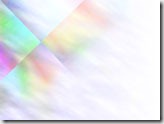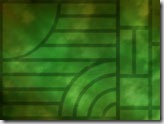Interview: Finding the right graphic design
Geetesh Bajaj, PowerPoint MVP, designs and sells high-quality PowerPoint templates on his site, Ppted.com . He also provides in-depth how-to information on his other site, Indezine.com , as well as writing the Microsoft Office PowerPoint 2007 Complete Makeover Kit . Geetesh graciously took some time to answer a few questions from the Visual Communication and Design blog.
All images in this post are taken from Ppted.com .
Where do you get your inspiration for the visual “look & feel” of your design? 
Design always evolves. I would not be truthful if I said that I had an exact idea of any look and feel for a project. So, ‘inspiration’ in itself is a relative term that’s not fixed. I might get inspired by something and start working on it – and unconsciously, I might drift to another look and feel. In the end, inspiration is a starting point that evolves into a seemingly different end result.
I get inspired by many conventional things: photography, natural textures, historical motifs, etc. In addition, I find inspiration in children’s art, the angle at which a door hinges on to a door frame, how you can place some handmade paper over another and create design, or even plain doodling.
The difficult part is to transfer that sort of inspiration to my design staff, so I try to make the difficult into the easy by breaking my thoughts into small concepts. I just give them a brief idea and then allow them all the creative freedom that I can. I’ve never been disappointed with that approach.
Some people have stated that the principles of graphic design are “Contrast, Repetition, Alignment, and Proximity.” What principles do you observe when designing your templates?
 Graphic design in its pure form has no principles, just guidelines. I’ve found that no principle works all the time. However, these tricks work pretty well:
Graphic design in its pure form has no principles, just guidelines. I’ve found that no principle works all the time. However, these tricks work pretty well:
· Look at a design, and keep looking for a while
· Play with it, and
· Allow the natural choices of evolving that design to progress.
Every design has something hidden within itself – like a macrocosm within the microcosm. You just have to discover that for your design.
How do you decide whether a specific graphic design layout is appropriate for your content?
There’s very little in this world that may not work for all content, primarily because you are going to evolve while you work. Watercolor artists do not have that freedom because evolution for them may translate into another painting; with the digital canvas that we use in PowerPoint, evolution is the cure for everything.
There’s nothing that cannot be made better through constant evolution – and after all, a new graphic design layout is a mere click away! Yet we suffer from bad design all the time, and that happens because people are scared to experiment or they are pressed for time.
Of course, both experimentation and logic have their place in deciding what type of layout you want to use for a particular slide. Luckily, those options can be easily narrowed down by first creating a proper outline. Once that is discovered, it’s easier to implement the guidelines that you mentioned rather than the other way around. If you start with the guidelines, you have all rules, no soul – if you end with them, they can actually improve your design.
